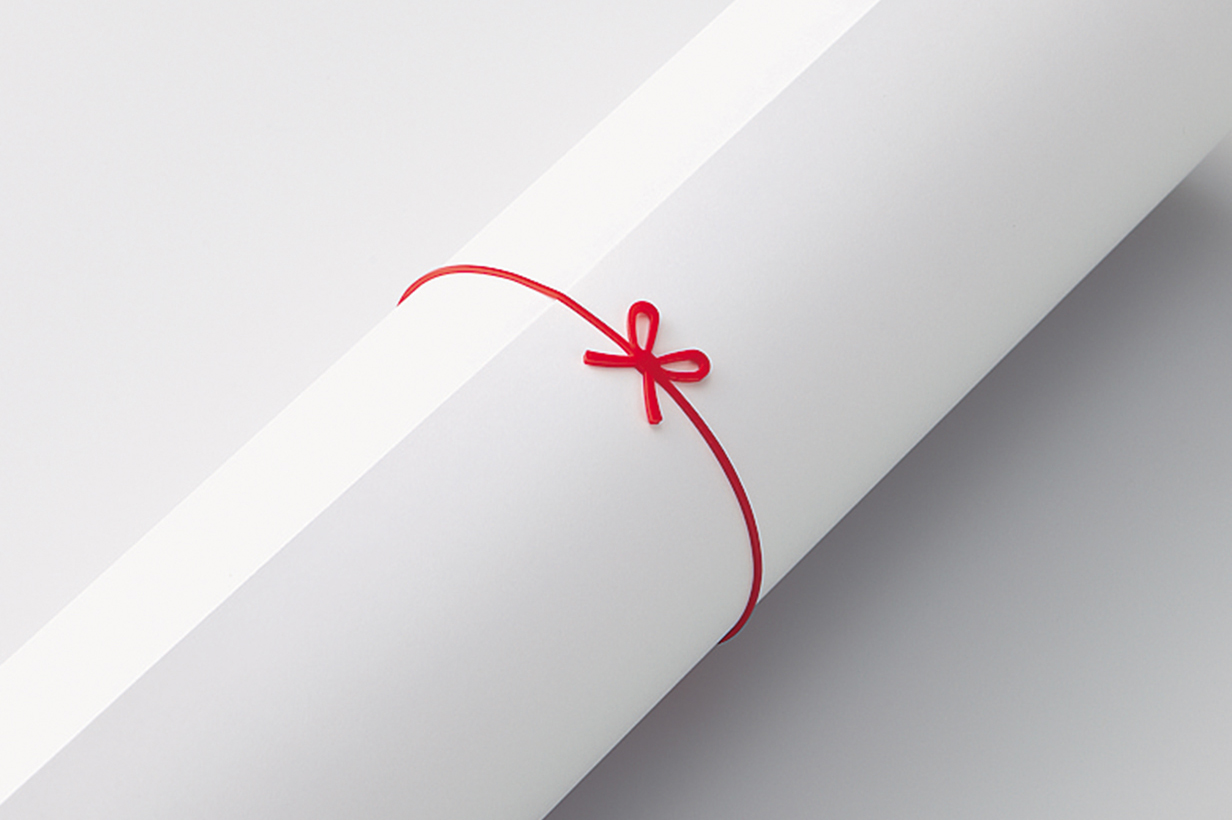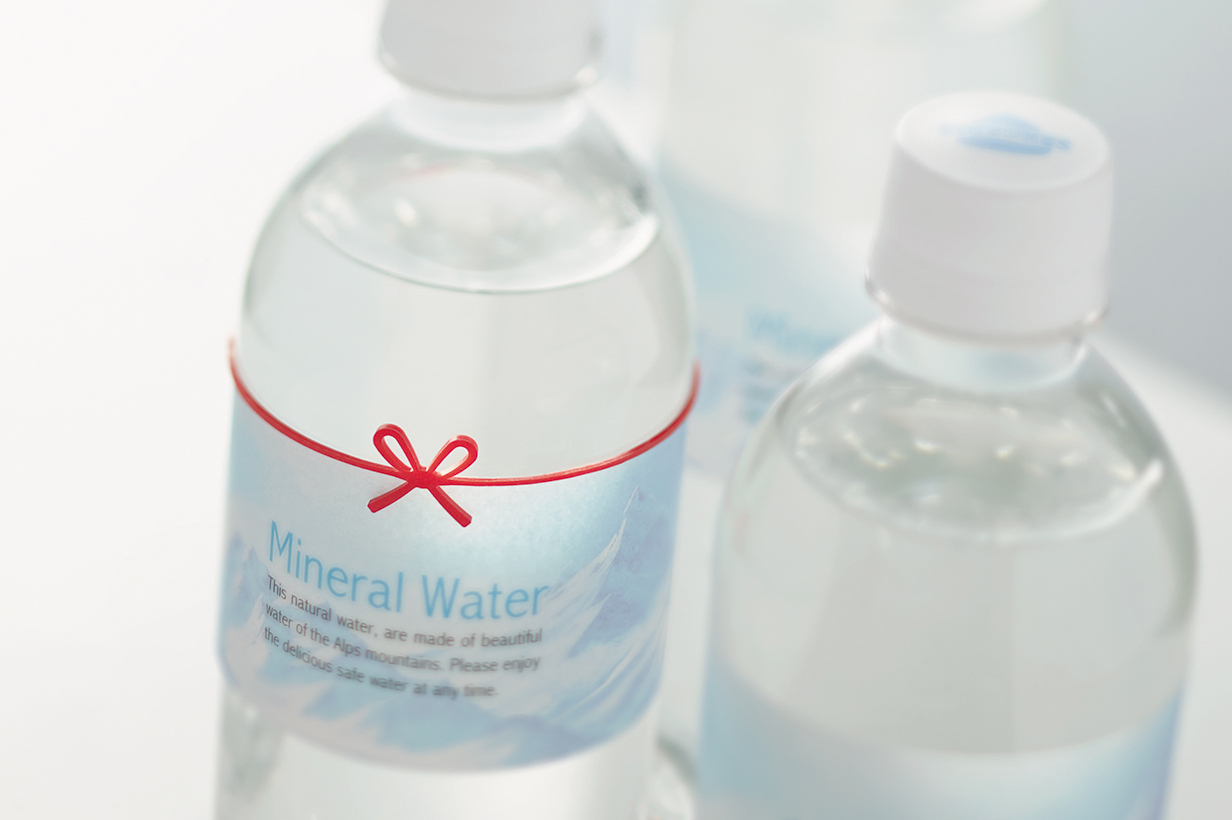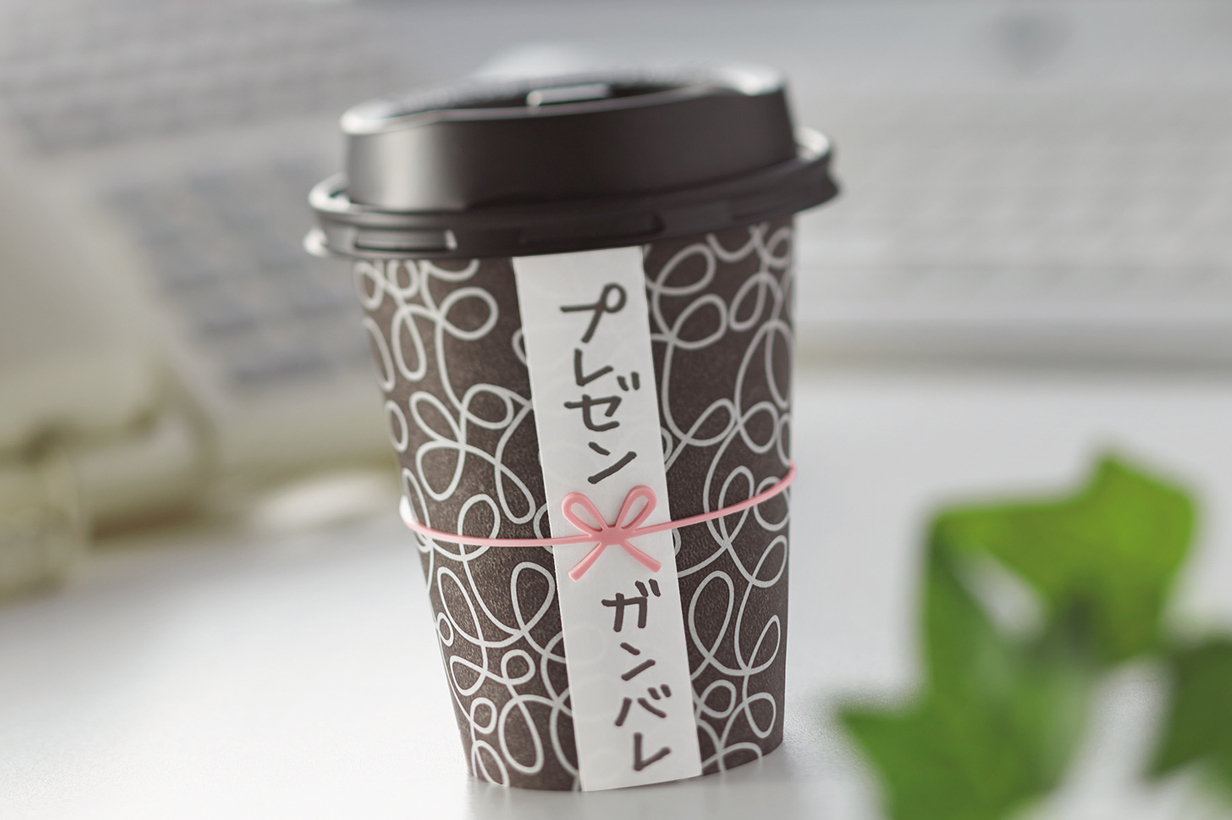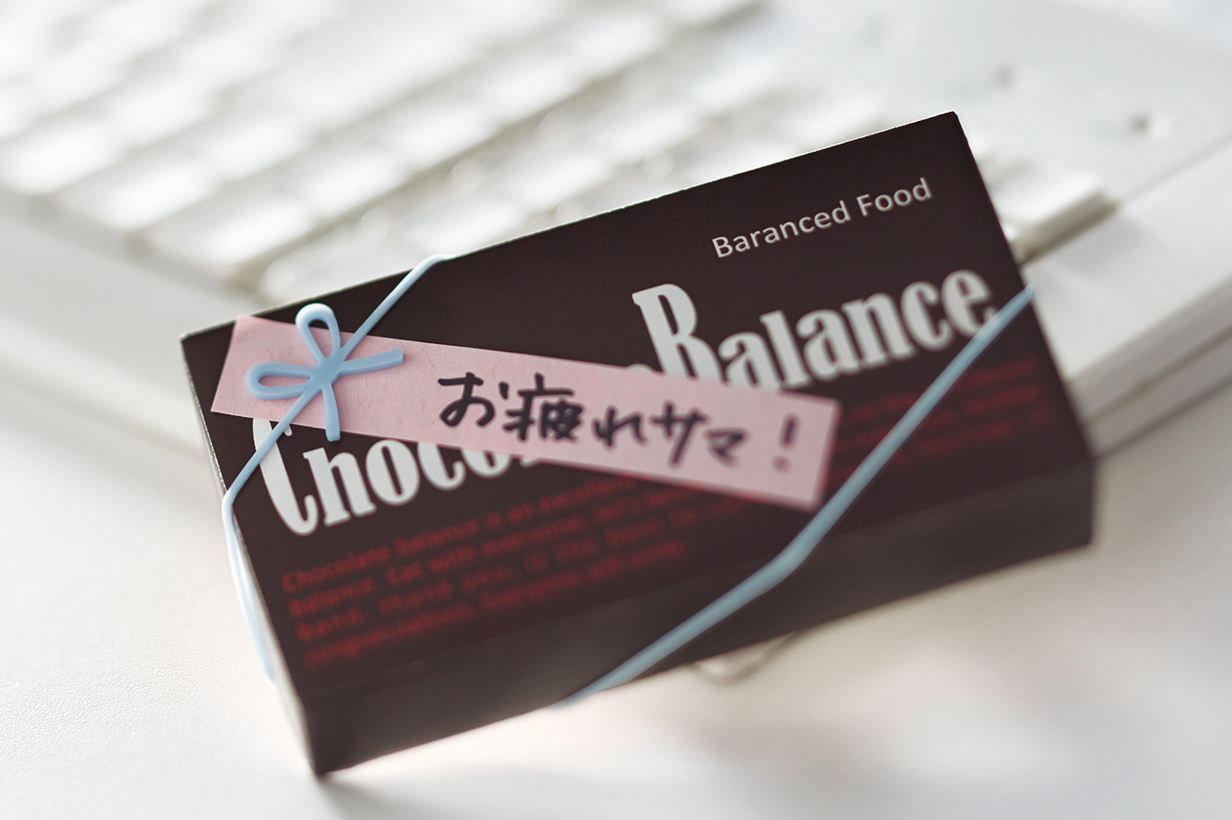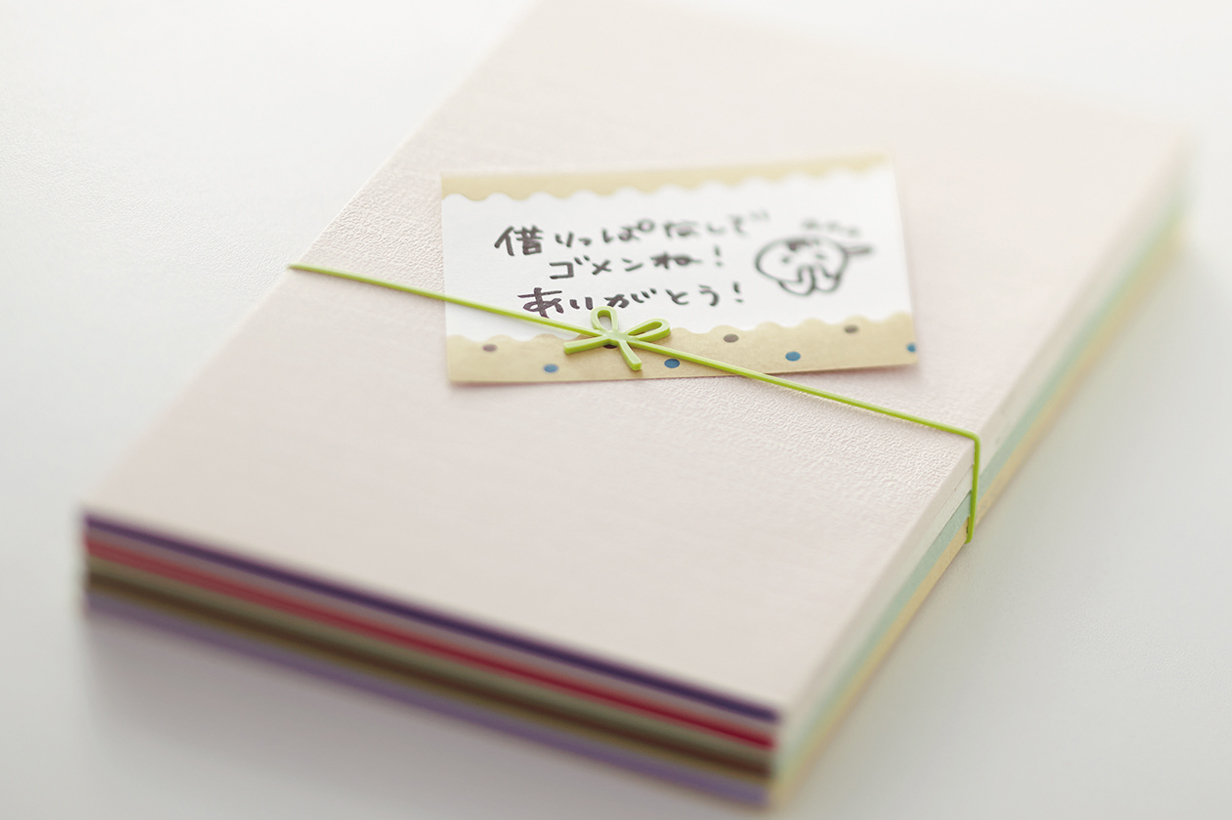FROM CONTEST TO MARKET
Wagomu
<2013 Merit Award>
These Wagomu made from silicone are based on the motif of the decorative bowknot ties “Mizuhiki” that means “let there be many times”.
*Only available for purchase in Japan.
FROM CONTEST TO MARKET
As they can be easily untied and tied again, the “Mizuhiki” bowknot ties with their meaning of “let there be many times” are used for all congratulatory messages in general. By attaching the Mizuhiki ties to rubber bands, they not only have the ability to bundle things together, they can also be used as a minimum packaging for gifts. And, as they can be re-used many times, we want them to form a kind of communication from person to person. This kind of happy and ecological proposal was evaluated and “Wagomu” (the name of the artwork at the time of the award was “MIZUHIKI BAND”) was awarded the Merit Award in the KOKUYO DESIGN AWARD 2013.
When progressing with the process of making the artwork into a product, first we examined the methods with which usual rubber bands are made. The natural rubber that has been pushed into a tube shape is cut into round slices like Kintaroame (cylindrical candy). However, in that process, we found that the shape of the bow could not be represented well so we switched to a production method of putting the rubber in molds.
Also, we changed the material from natural rubber to silicon rubber that can be molded more easily. To create a likeness to Mizuhiki ties, the detail in the design of the bows is very important. The angle of important lines and the depth of cuts; the ease with which the molds can be made and durability that are connected to productivity and quality. Whilst carefully verifying the balance of these factors, we managed to get closer to the ideal form.

(Left) Initially, we had a hard time achieving the shape of the bow. (Right) The shape finally achieved.
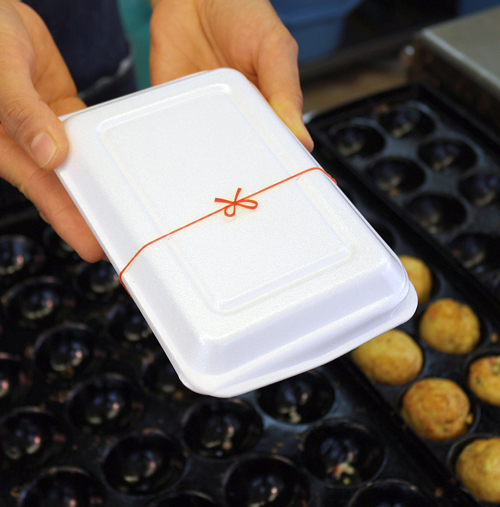
From the presentation sheet at the final review.
There were two problems in addition to those connected to bringing the design to fruition.
One was the elasticity. Silicon rubber is a high-performance material that does not deteriorate or have a rubbery smell but, as it does not stretch as well as natural rubber, we made many trials to ensure that the same level of the function of the original rubber band could be ensured and whilst assessing these trials we made improvements as we went along.
Another problem was the cost. For both material costs and processing costs, it was difficult to attain the same kind of price as for normal rubber bands. The original concept was for them not to be in any way special, just like rubber bands for businesses that are sold in bags and we had the image of a scene in which the rubber bands were used in large quantities.
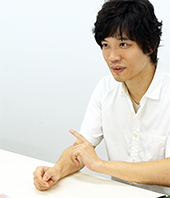
Yu Asao (Kokuyo Design Award 2013, Merit Award, name of artwork: MIZUHIKI BAND)
“When we consulted with KOKUYO, they told us that we should proceed with the product with the assumption that it is for gifts. In the presentation at the final review, an important part of our proposal was the everyday usability of the "easy to use price" so it was just like a proposal for takoyaki packaging. However, as the meetings proceeded, we felt that the traditional concept of "not being used just once and thrown away but being passed from person to person" was more appropriate after hearing that the silicon rubber used is more durable than the normal rubber used in rubber bands and that it is made with a different technique. Although the way it would be sold was different to the concept at the time of our proposal, I feel happy that the concept of our artwork was still retained from the point of view of the material used.” (Yu Asao)
Assuming it is a gift, we worked on ideas such as attaching a case to make it easy to give to someone. Also, we hope that foreign visitors will buy it as a small souvenir to take home so we have added some English description and are putting it together with an overall Japanese sense of taste.

4 colors were developed: "red," "light blue," "light green" and "peach".
4 colors were developed: "red," "light blue," "light green" and "peach". Please use them by choosing a color that matches how you feel at that time or a color that matches the person to whom you want to convey your feelings.




















